The Circular Life of Coffee Grounds and Plastic Bottles
Image Source: Link
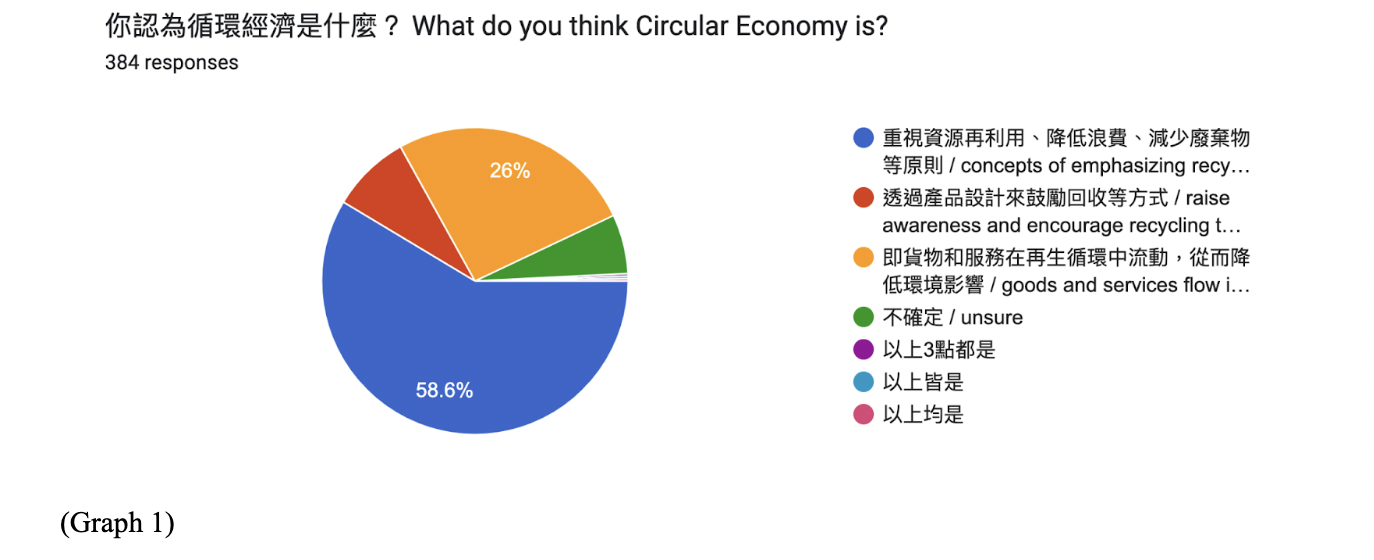
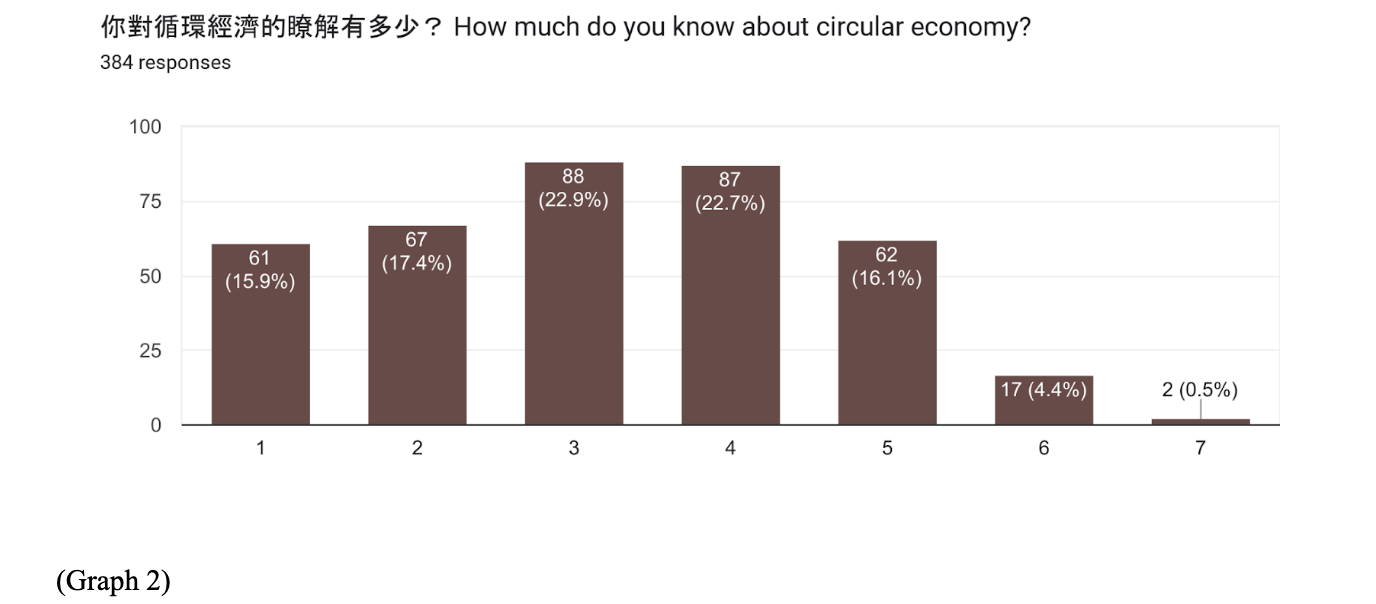
Throughout the first survey question “What is circular economics?” 58.6% of people think that a circular economy is the concept of emphasizing recycling, lowering waste, decreasing unwanted materials, etc. After doing different kinds of research, our understanding of the circular economy is a method that involves reusing, repairing, and recycling, of which there are 58.6% of people that gives us the correct answer. One of the reasons that people can correctly understand the main concept of the circular economy may be because global warming has become more severe recently due to the increase in carbon footprint. Moreover, the industrial process and fossil fuel combustion play a more important role in people’s lives and it leads to most of the carbon footprint. However, a circular economy can create less waste and carbon footprint which becomes one of the solutions most large multinational companies start using. Hence, people are able to be in touch with the circular economy or even understand its definition because the circular economy has gradually developed, and people also pay more attention to environmental issues nowadays. Through graph 2, we can know that most people think their understanding of the circular economy is about level 3 or 4, and they may still feel they don’t understand the full aspect of the circular economy. In addition, through the comparison of age and respondents’ answers on this question, we can interpret whether students think they are able to understand circular economy or not. In the 61 respondents that think they only have level one understanding, there are 45 students who choose it. Moreover, 43 out of 67 students chose level 2, and 44 out of 88 chose level 3. Together, there are 174 out of 195 of all students who chose levels 1~3. Therefore, it is inferred that students feel they have a low level of detailed understanding of the economic development model of the circular economy which demonstrates their unfamiliarity toward it.
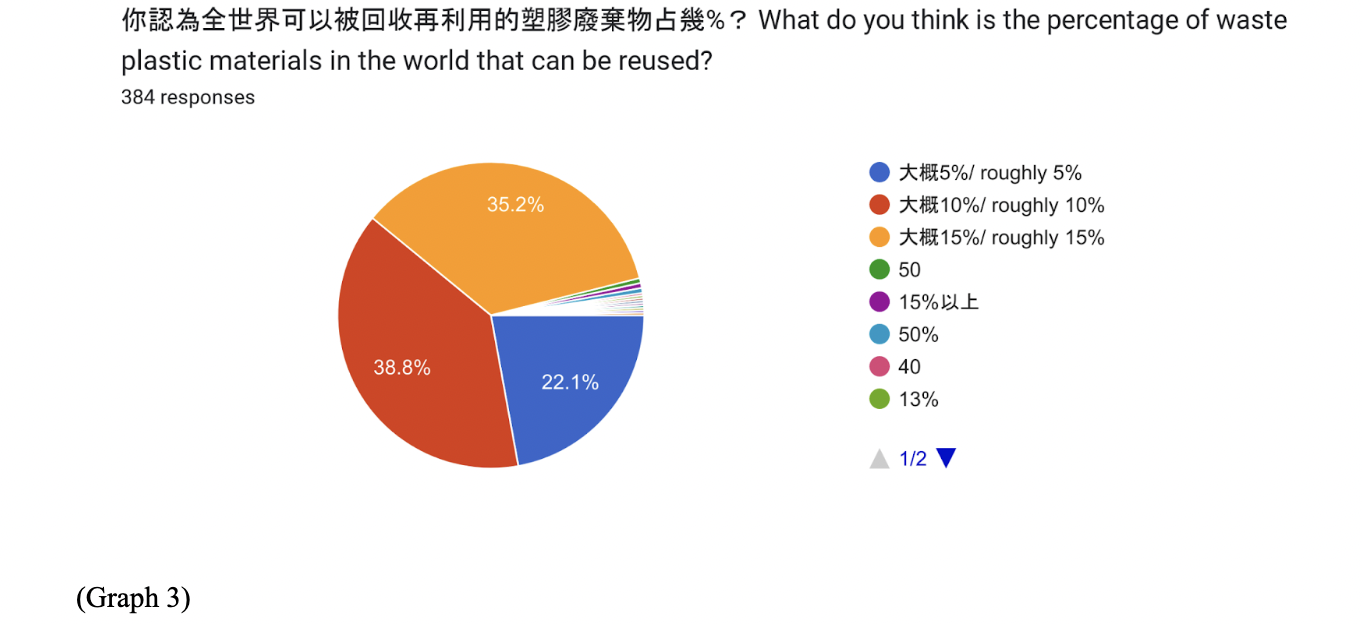
From our research, we understand that the percentage of waste in the world that can be reused is about 10%. There are even some plastics being burned or thrown in terrestrial or aquatic environments that can lead to severe pollution of the environment. Moreover, 35.2% of people believe that about 15% of the world's waste can be reused. On the other hand, 22.1% of people think that the percentage of waste in the world that can be reused is about 5%. However, only 38.8% of people get the correct details about the circular economy. This can demonstrate that most people didn’t focus on the data details about recyclable materials and their attention to plastic materials won’t increase even when global warming has become severe nowadays. In addition, it also shows that although the government tries to achieve a goal of a circular economy, many citizens still didn’t follow the development of the circular economy. We can also use this statistical data to prove our interpretation regarding graph 2 “students feel they have a low level of detailed understanding of the economic development model of the circular economy which demonstrates their unfamiliarity toward it”. Since we sent our survey to our school, most of the respondents are students and the data illustrates that most of the students didn’t look into the updated information on circular economy and may even not really try to achieve one of the goals of circular economy “0 waste.”

The correct answer to the circular economy can be related to products such as clothing, lightbulb, phones, shoes, and electronics (refrigerators, washers). According to the bar chart above, we can see that the majority (91.9%) believe that clothing can be related to the circular economy. The reason why clothing has become the most popular choice is that people are more familiar with clothes made from recycled materials. We can see brands promoting clothes made from recycled materials like polyester or cut-out wastes during production in our daily lives. Second, 69.8% of people believe that shoes are related to the circular economy. For example, there are many shoe brands such as Ccilu, who use plastic bottles to make the circular economy products, and they use social software to promote their shoes. So many people know that shoes can be connected with the circular economy. Third, people choose mobile phones that they think are compatible with the circular economy (67.7). Now there is a new program for old mobile phones to be recycled and refurbished and resold to emerging markets. In addition, people chose something other than electronics or light bulbs as a product that can be made with recycled materials because the concept of recycling promoted by the government is mostly about clothing, shoes, and batteries which makes people unaware of the recycling of electronics. Since Taiwan is highly dependent on petrochemical products, plastic still plays an important role in people’s lives and they don’t want to abandon such a convenient product. In addition, the Taiwanese government didn’t strongly promote electronics recycling, they mostly promote plastic material recycling. This may be because the petroleum companies made some financial political contributions that have to create benefits for the government.
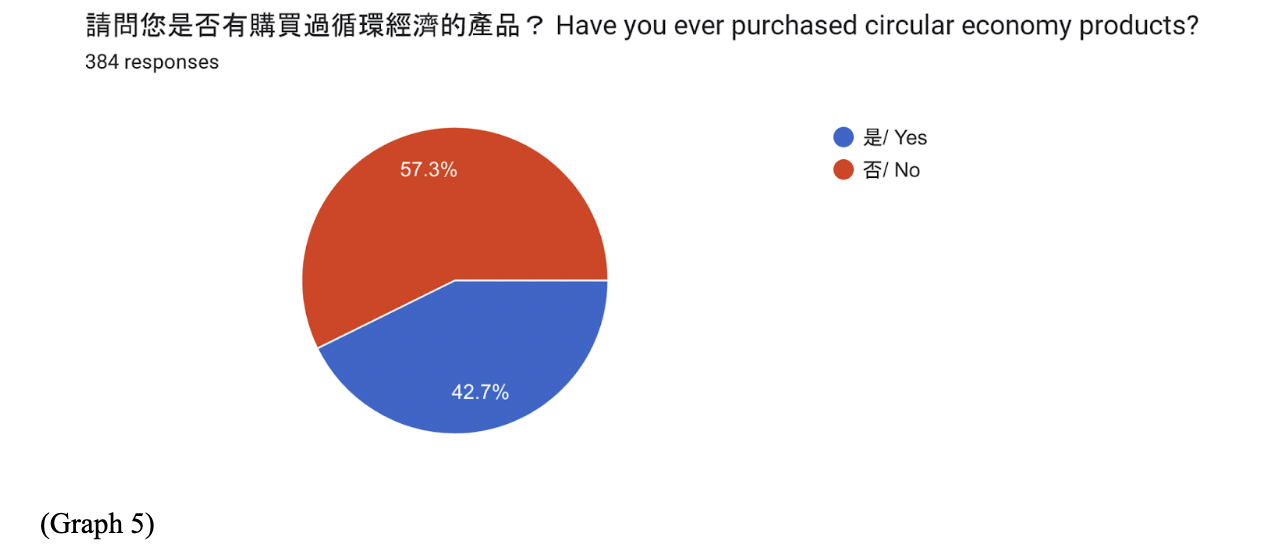
According to the respondent, about 57% of people didn't buy circular economy products and about 42% of people have brought circular economy products before. These phenomena may be because the products of the circular economy require a lot of processing and material collection, which increases the price of these products. However, since most people lack a basic understanding of the potential and challenges of patented technologies, they think the product price does not match the value and most consumers want to use a lower price to buy non-environmental friendly products.
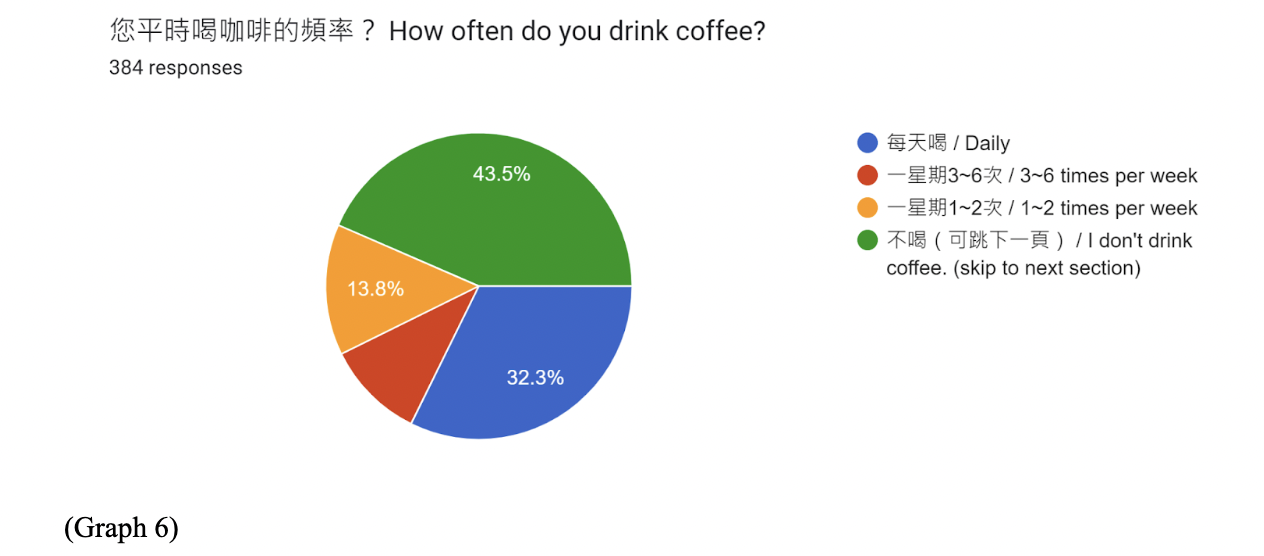
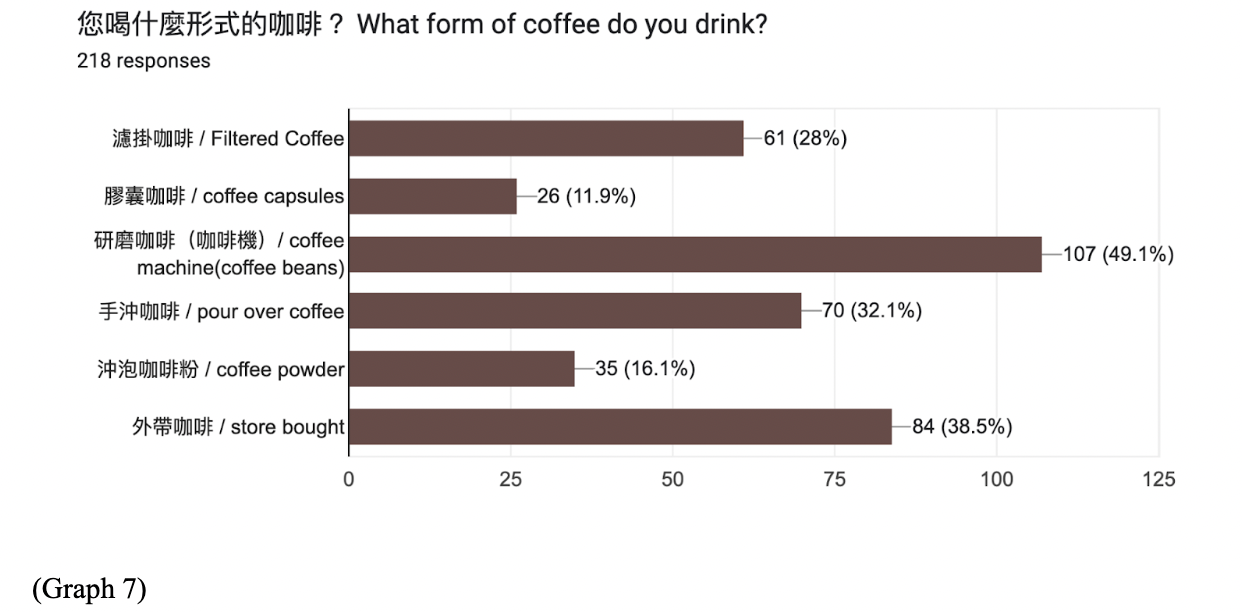
People in Taiwan used to drink tea before coffee became more widely consumed and the market grew. The percentage of coffee drinkers (56%) is higher than that of non-coffee drinkers (43%), according to the statistics in the table. Coffee has had an impact on the Han people's tea tradition. The age range and profession where coffee is consumed most frequently are 36 to 45 years old and cultural and educational institutions (91% 31 out of 34). Additionally, it is clear that coffee has become an indispensable refreshing drink for people at work. The market for coffee is becoming increasingly popular since there are also more coffee shops and types of coffee nowadays. The most common coffee varieties chosen include ground coffee, pour-over coffee, and take-away coffee, which people's requirements for coffee quality increased as its penetration rate rapidly increased.
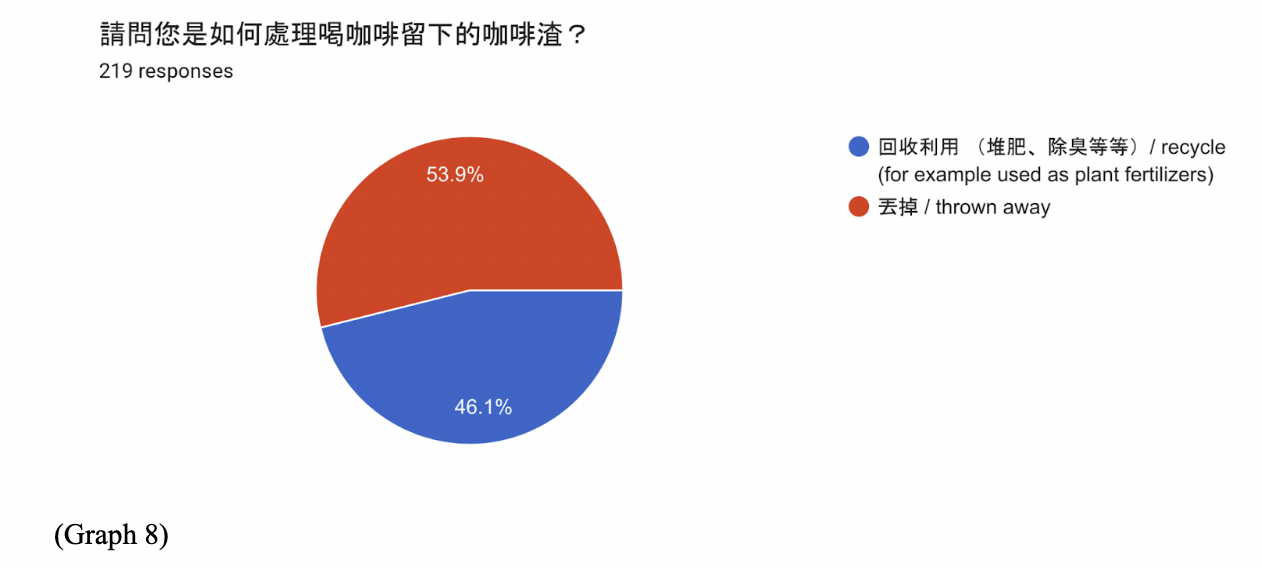
According to the respondent, about 53% of people throw the coffee grounds away. Comparing the different forms of coffee and the way people deal with coffee grounds (recycle or throw away), we can find all three kinds of coffee that exist: coffee ground waste (coffee machine, filter, pour over) 3 out of 11 (27%) people who drink filtered coffee recycle the coffee ground. 19 out of 42 (45%)who drink using coffee machines reclaim coffee grounds. Lastly, 13 out of 37(35%) drink pour-over coffee and recycle the coffee grounds left. All the data shown above regarding different types of coffee that will create coffee grounds could demonstrate that the proportion of people throwing the coffee grounds is larger than people recycling them. This phenomenon can be explained by recycling and reusing waste is inconvenient. Most people are not willing to recycle these coffee grounds because they may not know where to recycle them or how to deal with them. For instance, you will see paper recycle bins in our daily lives but you usually won’t see coffee grounds's recycle bins. Therefore, coffee grounds recycling's penetration rate still isn’t high nowadays.
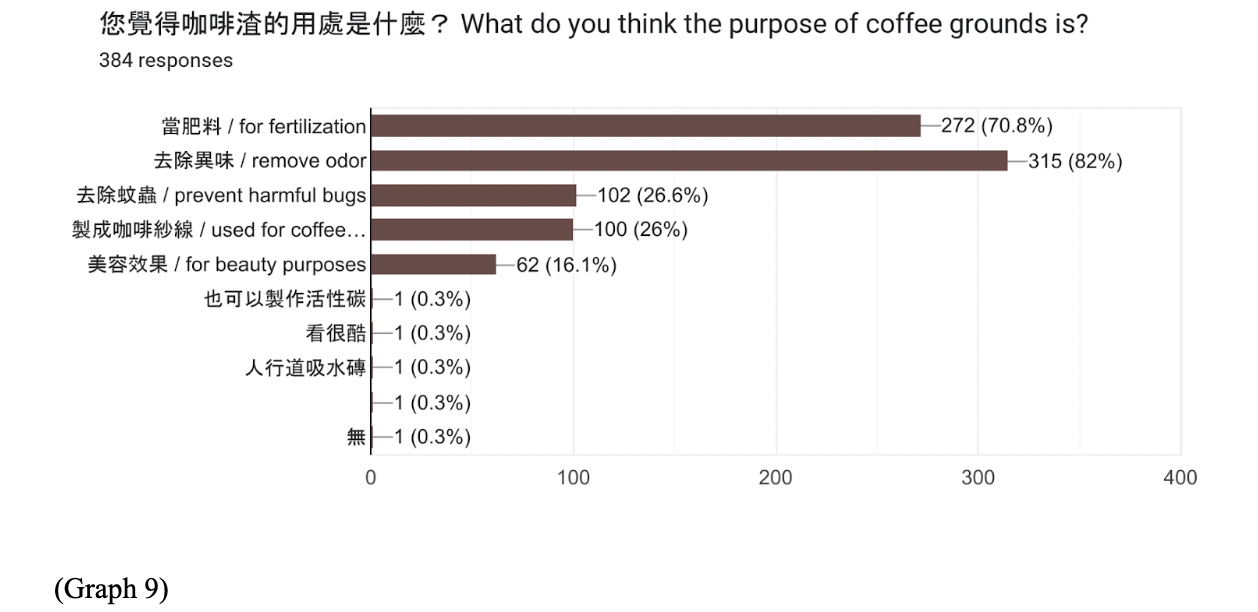
According to the respondent, about 70% of people think coffee grounds can become fertilized. About 82% of people think coffee grounds can remove odor. About 26% of people think coffee grounds can prevent harmful bugs and are used for coffee-made yarn. In recent years, people have made the most use of the physical properties of coffee grounds, such as deodorization, insect repellent, and dehumidification. For example, coffee grounds remove excess moisture from the skin, making customers’ skin firmer, so it has a beautiful purpose. Therefore, we can infer that people start to be interested in the physical properties and functional abilities of coffee grounds instead of simply throwing them away.
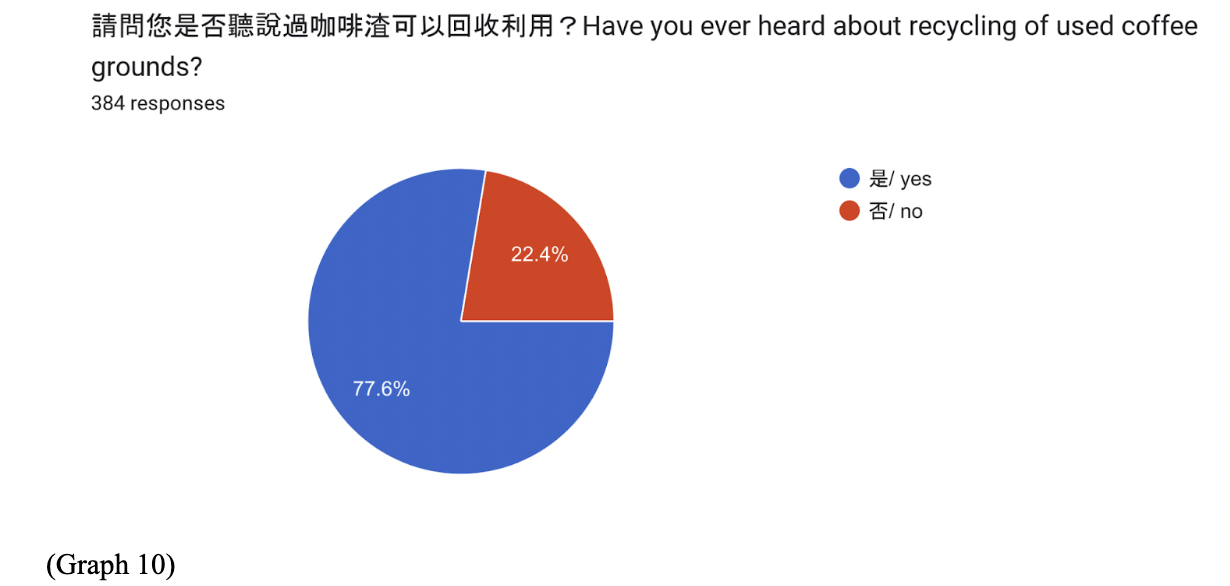
According to graph 10, we can see that the proportion of people (22.4%) who don't know about coffee grounds can be recycled. On the other hand, 77.6% of people know coffee grounds can be recycled. Government has kept promoting and media advertising on using coffee grounds as fertilizer and other usage in recent years which give people the basic understanding on the recyclable properties of coffee grounds and how they can reuse coffee grounds by themselves. Also, the media advertised the deodorizing function of coffee grounds to urge many people to follow the method. Although 86.2%(graph 12) of people didn’t use the coffee grounds products before, we can know that this technology isn't within the public's awareness of the recycling of coffee grounds.
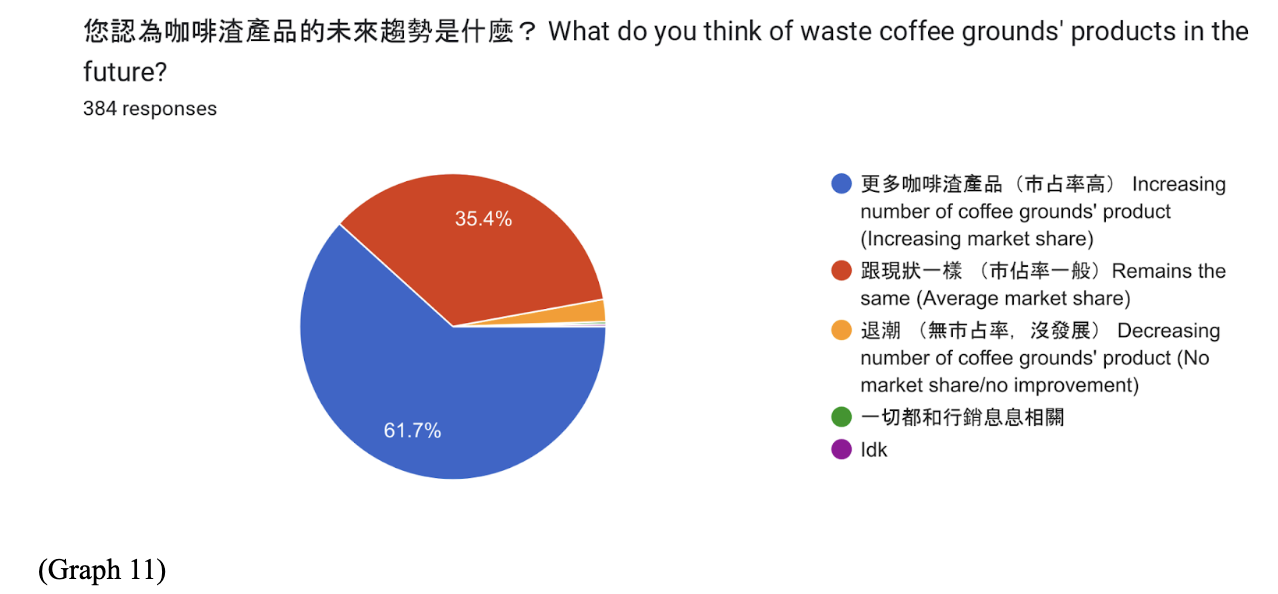
According to the pie chart, we know how people think about coffee grounds products in the future, and most people (61.7%) think that the coffee grounds product will increase market share. Another 35.4% of people think that the coffee ground products will remain the same. Only 2.3% of people have chosen the number of coffee ground products to be decreasing. According to our research, because the population continues to increase, the trend of products and the rising consumption in emerging markets. Circular economies may provide a solution for climate change, which has become more severe in recent years. Circular economy contains sustainable resources that won't be impacted by resource depletion brought on by global warming due to its reusing and recycling of the resources. Companies operating in the circular economy will definitely increase at this time. Particularly, people believe that if individuals can no longer rely on petroleum-made goods, more people will invest in coffee grounds products as a more advanced technology. Therefore, people will think that coffee ground products can increase the number of the market share in the future.

According to the data collected from the respondents, most of the people 86.2% had ever used coffee ground thread-made products. Another 13.8% of people don’t have ever used coffee ground thread-mad products. Because the coffee ground thread-made products' pay is higher than other products. Also, coffee ground yarn is a relatively new product technology. People may not know the several significant functions of coffee grounds and heard about its product due to the fact that the product hasn't been popularized in Taiwan yet. According to the data of graph 9 regarding people who have never heard of products made of coffee yarn, about 95% (84 out of 88)of them chose coffee grounds that are used for fertilizer and deodorization, which also reflects the low penetration rate with this technology in the modern market.

Clothes and shoes have a relatively high demand in our life. 58% of people have used clothes made of coffee yarn, and only 24% of people have used shoes made of coffee yarn. Coffee grounds may be used to make coffee yarn, which can then be used to make clothing. Instead, patented technology like the XpreSole employed by CCILU will be required if the yarn is used to produce shoes. As a result, there will be fewer coffee-made shoes available on the market, which decreases the chance that customers would buy them. Consumer demand for circular economy items is also comparatively lower because they are more expensive and need patented technology. In particular, the price of shoes may be considerably more than the price of apparel.